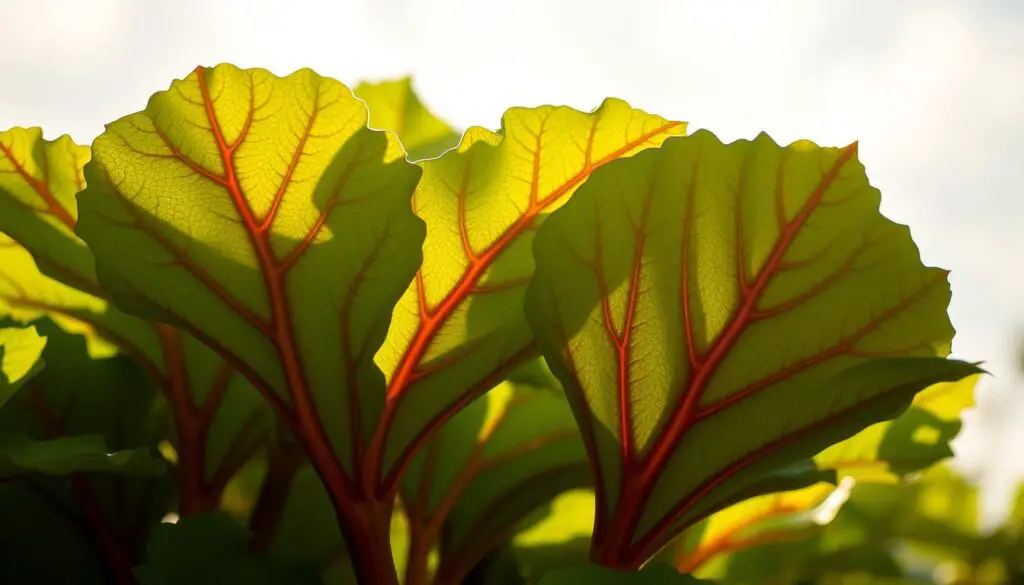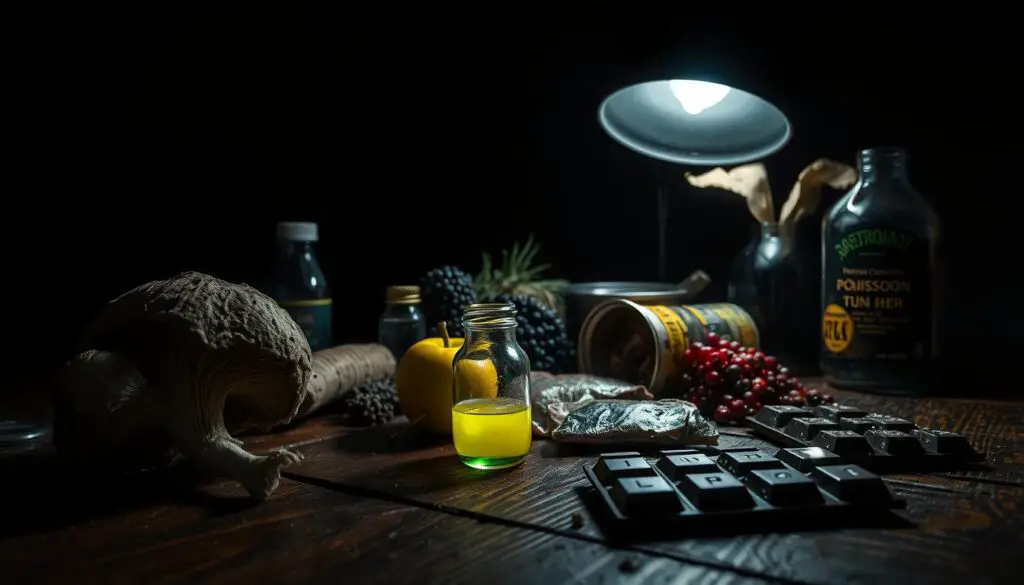This article talks about ten foods that are very dangerous “sponsored link”. It shows how important it is to cook them safely. Learning about these foods helps us enjoy them without danger.
This post may contain affiliate links where I get a commission on qualifying purchases at no extra cost to you.
Key Takeaways
- Proper food preparation is vital for safety.
- Some commonly consumed foods can be extremely toxic if not cooked correctly “sponsored link”.
- Understanding the risks associated with certain foods can prevent severe health issues.
- Always research safe methods for preparing potentially dangerous food items.
- Legislation plays an important role in regulating food safety and preparation.
Introduction to Dangerous Foods
Food is a key part of our lives, giving us energy and nutrients. But, some foods can be harmful if not prepared correctly. Knowing about these dangers helps us cook safely and avoid toxic foods in our kitchens.
Every year, food poisoning happens because of bad handling or cooking. It’s important to know that not all foods are safe. By being careful, we can make our food choices safer.
Knowing about dangerous foods helps us keep ourselves and our families safe. By cooking carefully, we can avoid health risks. This makes our kitchens safer and helps us stay healthy.
Fugu (Pufferfish)
Fugu, or pufferfish, is a big deal in Japanese food. It’s loved for its special taste and feel. But, it’s also very risky because of tetrodotoxin.
This toxin can make you very sick. It can even kill you if it’s not handled right.
What Makes Fugu So Deadly?
The danger of pufferfish comes from tetrodotoxin. It’s found in the liver, ovaries, and skin. Just a tiny bit can mess up your nerves and breathing.
This can be very dangerous. There have been cases where people have died from eating fugu wrong.
Importance of Expert Preparation
Preparing fugu needs a lot of skill. Chefs in Japan spend years learning how to do it right. They know how to pick safe parts and get rid of the bad stuff.
This training is key. It lets people enjoy fugu without worrying about getting sick. It shows how important it is to mix skill with safety.
Ackee (Unripe)
Ackee is Jamaica’s national fruit. It’s loved for its taste and how it’s used in food. But, eating unripe ackee is dangerous because it has a toxin called hypoglycin A.
This toxin can cause Jamaican vomiting sickness. It makes people vomit a lot and can be very serious.
Understanding Jamaican Vomiting Sickness
Jamaican vomiting sickness happens when you eat unripe ackee. It can start to make you sick within hours. In bad cases, it can cause seizures and even death.
The problem is hypoglycin A. It messes with how your body works. Knowing this helps keep you safe when eating ackee.
How to Properly Prepare Ackee
It’s important to prepare ackee correctly “sponsored link” to stay safe. The fruit must be fully ripe before you eat it. Here’s how to do it safely:
- Only eat ackee that has opened naturally, showing its creamy flesh.
- Don’t eat unripe fruit. It has closed pods and is hard.
- Take out seeds and any black parts. These might mean the fruit is bad.
- Boil the ripe ackee for at least 10 minutes. This gets rid of hypoglycin A.
By following these steps, you can enjoy ackee safely and taste its rich flavors.
| Preparation Step Description | n |
|---|---|
| Identify Ripe Ackee | Look for pods that have opened naturally with visible creamy flesh inside. |
| Discard Unripe Fruit | Reject closed pods and any with a firm texture. |
| Remove Seeds | Take out all seeds and any blackened portions before cooking. |
| Boil Ripe Ackee | Cook for a minimum of 10 minutes to eliminate hypoglycin A. |
Green Potatoes
Green potatoes have a toxin called solanine. It forms when the tubers get light. This makes safe potatoes into toxic foods. Knowing about solanine is key to eating safely and cooking right.
The Science Behind Solanine
Solanine protects the potato plant from pests and diseases. When potatoes get sunlight, they turn green. This makes solanine build up in the skin and sometimes the inside. Eating too much solanine can cause sickness, headaches, and brain problems. This shows why we must be careful with green potatoes.
Safe Storage and Preparation Tips
To avoid solanine risks, follow these tips:
- Keep potatoes in a dark, cool spot to stop them from turning green.
- Look at potatoes often for green signs and throw away any green ones.
- Wash potatoes well before cooking, and cut off any green bits or sprouts.
- If you’re not sure if a potato is safe, it’s best to throw it away.
By sticking to these tips, you can eat potatoes safely. Being aware and storing them right is important. It helps keep food safe and makes eating potatoes more fun.
Bitter Almonds (Raw)
Raw bitter almonds are very dangerous because they have amygdalin. This turns into cyanide in our bodies. This can be very harmful or even deadly.
It’s important to know the difference between bitter and sweet almonds. Sweet almonds are safe because they don’t have much amygdalin. Knowing this can help avoid poisoning.
How Amygdalin Converts to Cyanide
Bitter almonds have amygdalin, which is scary. When our body breaks it down, it turns into cyanide. This is a very harmful substance.
Even a few bitter almonds can cause serious problems. Doctors say eating a handful can be deadly. It’s very important to be careful with these almonds.
| Type of Almond | Amygdalin Content | Cyanide Risk |
|---|---|---|
| Bitter Almonds | High | Very High |
| Sweet Almonds | Low | Negligible |
Rhubarb Leaves
Rhubarb “sponsored link” is often thought of as a tasty treat. But its leaves are dangerous. They have a lot of Oxalic acid, which is bad for you.
The Risks of Oxalic Acid
Eating rhubarb leaves can make you very sick. It can cause breathing problems, seizures, and even harm your kidneys. This is why you should not eat the leaves.
Culinary Uses of Safe Parts
The stalks of rhubarb are safe and yummy. You can make many dishes with them, like pies and sauces. Just remember, only use the stalks, not the leaves.

Here’s a table that shows the difference between the leaves and stalks:
| Part of Plant | Toxicity | Culinary Uses |
|---|---|---|
| Rhubarb Leaves | High in Oxalic acid, very toxic | Not edible |
| Rhubarb Stalks | Safe to eat | Used in pies, jams, sauces, and more |
When cooking with rhubarb, use the stalks for tasty dishes. Avoid the leaves to stay safe and enjoy your food.
Cassava (Raw)
Cassava is a tasty root vegetable. It can be added to many dishes “sponsored link”. But raw cassava has a compound called linamarin that is harmful.
It’s important to know about linamarin and how to cook cassava safely. This keeps everyone healthy.
Understanding Linamarin and Its Effects
Raw cassava has linamarin, which turns into cyanide when eaten. The danger level changes with cassava types. Knowing this is key for those cooking it “sponsored link”.
Eating cyanide can make you dizzy, sick, and even hurt your breathing. Cooking cassava correctly is key to avoiding these dangers.
Proper Cooking Techniques
There are safe ways to cook cassava. Soaking it in water for hours helps remove linamarin. Then, boil it in fresh water for 30 minutes to cut down on toxins.
Frying or baking it after boiling makes it taste better. It also gets rid of any leftover toxins. Always follow these steps to eat cassava safely.
10 Foods That Can Definitely Kill You if Wrongly Prepared
Many foods can be deadly if not prepared correctly. This includes popular and exotic dishes. It’s key to know that even simple ingredients can be dangerous if not handled properly.
Pufferfish, or fugu, has toxins that can be fatal. Unripe ackee can cause Jamaican vomiting sickness. These foods need careful preparation to be safe.
Green potatoes have solanine, which can cause food poisoning. Bitter almonds can turn into cyanide if not processed correctly. These foods are dangerous if not prepared correctly.
Rhubarb leaves have a lot of Oxalic acid. Raw cassava has linamarin, a toxin. Both need special preparation to be safe.
Knowing how to cook these foods safely is important. This way, we can enjoy them without risking our health.
| Food Item | Toxic Component | Common Effects of Improper Preparation |
|---|---|---|
| Fugu (Pufferfish) | Tetrodotoxin | Paralysis, death |
| Ackee (Unripe) | Hypoglycin A | Vomiting, coma |
| Green Potatoes | Solanine | Nausea, headaches |
| Bitter Almonds (Raw) | Amygdalin | Respiratory failure, death |
| Rhubarb Leaves | Oxalic Acid | Kidney failure, death |
| Cassava (Raw) | Linamarin | Nausea, neurological issues |
Additional Dangerous Foods to Consider
Many people don’t know about dangerous foods in their kitchens. These foods seem safe but can be risky if not handled right. Knowing about these foods helps keep everyone safe while cooking.
Raw sprouts, like alfalfa and bean sprouts, can have harmful bacteria. This can cause serious sickness. Always buy fresh, safe sprouts.
The unripe elderberry fruit is also dangerous. It has toxins that can make you very sick. But, cooking the berries makes them safe to eat.
Nutmeg is another spice to watch out for. Too much can be very harmful. It’s important to use it carefully.
| Food Item | Toxic Compound | Effects of Consumption | Precautions |
|---|---|---|---|
| Raw Sprouts | E. coli, Salmonella | Severe foodborne illness | Buy from reputable sources |
| Unripe Elderberry | Cyanogenic glycosides | Nausea, vomiting, coma | Cook thoroughly |
| Nutmeg | Myristicin, Elemicin | Poisoning, psychotropic effects | Consume in moderation |
It’s key to know about these dangerous foods. Safe food preparation is very important. This way, we can all stay safe from harmful foods.

Safe Food Preparation Practices
It’s very important to prepare food safely. This helps stop food illnesses and makes sure meals are okay to eat. Using the right cooking methods is key to keeping food safe.
Essential Cooking Techniques
Using the right cooking ways is very important for food safety. Here are some key methods to use:
- Thorough Cooking: Always cook foods to the right internal temperature to kill bad bacteria.
- Correct Storage: Put away perishable items quickly in the fridge or freezer to stop them from going bad.
- Regular Hygiene: Keep things clean by washing your hands and cleaning surfaces before and after touching food.
- Cross-contamination Prevention: Use different tools and cutting boards for different foods to stop them from getting mixed up.
Educating Others on Dangerous Foods
Teaching others about food safety is very important. Sharing what you know with friends and family helps make a safer food culture. Here are some ways to do this:
- Informative Workshops: Organize talks to teach about safe food preparation and share your own experiences.
- Resource Sharing: Give out materials that show which foods are dangerous and how to cook them safely.
- Encouragement: Tell your loved ones to start using safe food practices in their kitchens.
The Role of Legislation in Food Safety
Government rules are key in keeping food safe. They make sure food is safe and good for us. These laws cover how food is handled, made, and sold.
Food makers must follow these rules. This helps keep everyone healthy and safe. It’s not just rules; it’s a way to stop bad food from making us sick.
These laws also change as new risks come up. This keeps them working well to keep us healthy. Health groups and lawmakers work together to make sure everyone follows the rules.
Conclusion
Exploring dangerous foods shows us the risks of bad preparation. Foods like fugu and raw cassava can be harmful. Knowing this helps keep us safe.
Keeping food safety in mind is very important. Learning how to prepare food right can stop accidents. This article reminds us to always be careful with food.
Being careful with what we eat is essential for our health. Following these tips makes cooking safer and more enjoyable. It helps us avoid dangers in the kitchen.
FAQ
What are some examples of deadly foods if wrongly prepared?
Why is fugu considered so dangerous?
How can I safely prepare ackee?
What should I know about green potatoes?
How is cyanide related to bitter almonds?
What are the risks of eating rhubarb leaves?
How should cassava be prepared to avoid toxicity?
What practices can help ensure safe food preparation?
Are there other dangerous foods I should be aware of?
How does government legislation affect food safety?
Latest posts
- Crackling Pork: The Secret to a Delicious British Sunday Roast

- Discover 10 Favorite Ice Cream Flavors in the UK

- Chichester Canal Boat Ride: Discover the Tranquil Waterway

- Why Paddleboarding is Becoming a Favorite Water Activity

AS AN AMAZON ASSOCIATE, I EARN COMMISSIONS FROM QUALIFYING SALES AT NO EXTRA COST TO YOU.

